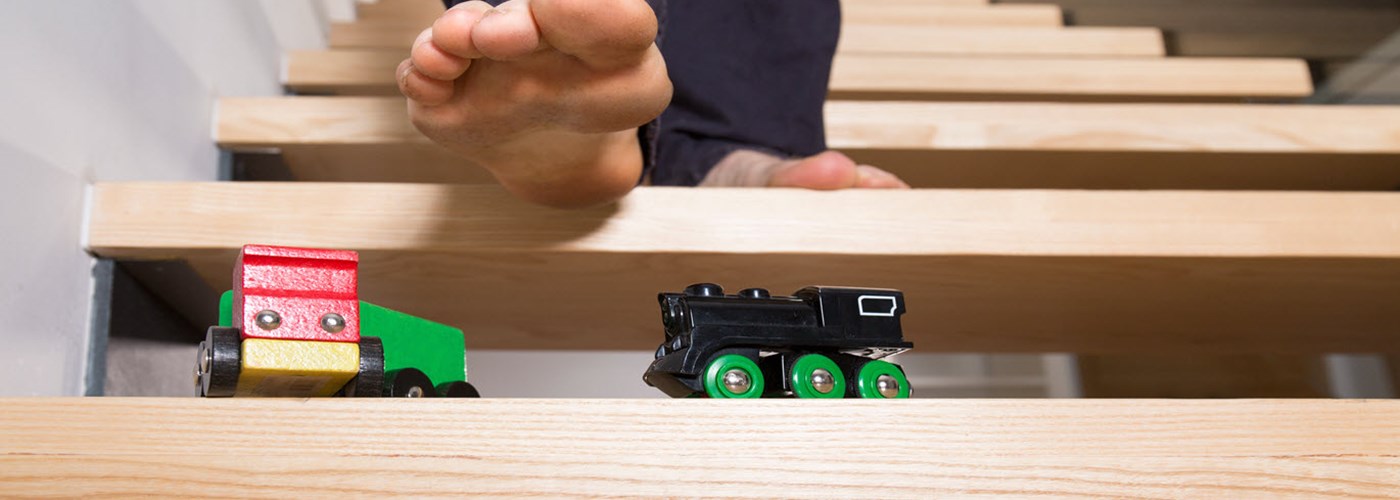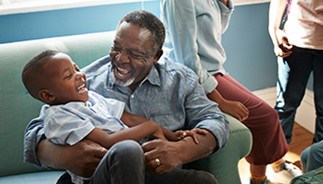10 Most Common Accidents in the Home and How to Treat Them
No matter how much we strive to make our domestic environment as safe as possible, accidents at home can still happen - even in the most conscientious of households.
When it comes to the health of our families, especially for those with young children, it makes sense to know exactly what to do if these common scenarios do occur.
At Benenden, we want to help increase your confidence in dealing with minor issues of health and safety in the home and we're on hand to give members reassurance and advice whenever it's needed.
Here are 10 of the most common accidents that can happen in the home and how to deal with them:
1) Falling objects
When children start to move around on their own, there is an increased danger of them pulling objects down on top of themselves. Being conscious of your kids' health means making sure any trailing electrical leads, tablecloth edges and dish towels are out of reach in order to help prevent accidents happening.
2) Trips and Falls
A fall can affect people of all ages, but they are most common amongst the very young and the very old. Often, falling over as a child will only hurt their pride and a few soothing words is all that’s needed. However, if the person who has fallen subsequently becomes drowsy, vomits or loses consciousness, it is important to seek medical advice.
3) Bruises
Even a fall that isn't serious can lead to nasty bruising which can be quite painful. Applying a cold pack - or even a packet of frozen peas - to the area affected can reduce swelling. Sometimes severe bruising can hide more serious issues such as broken bones, so if there is a great deal of continuous pain or movement of a limb is very restricted or impossible, once again professional help should be sought.
4) Sprains
A sprain is when a ligament, which connects parts of a joint, is stretched, twisted or torn. Knees, ankles and wrists are the most common parts of the body affected. If this occurs, apply an ice pack from your first aid kit, rest the affected area and give it time to heal.
5) Cuts
Any cut means that there will be some blood, and this can be one of the most difficult things involved in first aid for children. Apply pressure to stop the bleeding and apply an antiseptic to the area. Assessing the situation is important, but (generally speaking) if the blood stops following pressure, it is likely to be a minor cut that will not need stitches.
6) Burns
Hot drinks cause most burns and scalds to children under the age of five and, of course, children should be kept a safe distance away from open fires, cookers, irons, hair straighteners and matches, as these can be dangerous too. Any burn should be held under cold running water for ten minutes and then assessed. Having a clean plastic bag or cling film in your first aid kit can be an ideal way to cover burns to keep them clean and help them to heal.
7) Choking
Children can often have a fascination with putting objects in their mouth and swallowing them, meaning that choking is a common hazard. If you cannot dislodge the object promptly, then call 999 immediately.
8) Poisoning
Most poisoning incidents involve medicines, household products and cosmetics around the house. It is important, therefore, to keep anything that might be dangerous if swallowed well out of reach of children as an essential part of first aid in the home.
9) Glass-related injuries
Broken glass can cause serious cuts and so use of the material around the home in furniture or fittings should be carefully considered if you have a young family. Make sure doors, tables and shelving conform to British safety standards.
10) Drowning
Young children can drown in very shallow water, so should be supervised at all times when near it. This includes ornamental garden ponds, water features and even baths.
Source: NHS
About our healthcare
Benenden Health provides affordable private healthcare for everyone, giving you access to services such as our 24/7 GP Helpline and Mental Health Helpline straight away. Once you’ve been a member for six months you can request access to diagnostic consultations and tests.
You'll also have access to a wealth of health and wellbeing articles, videos and advice on a range of health issues.

